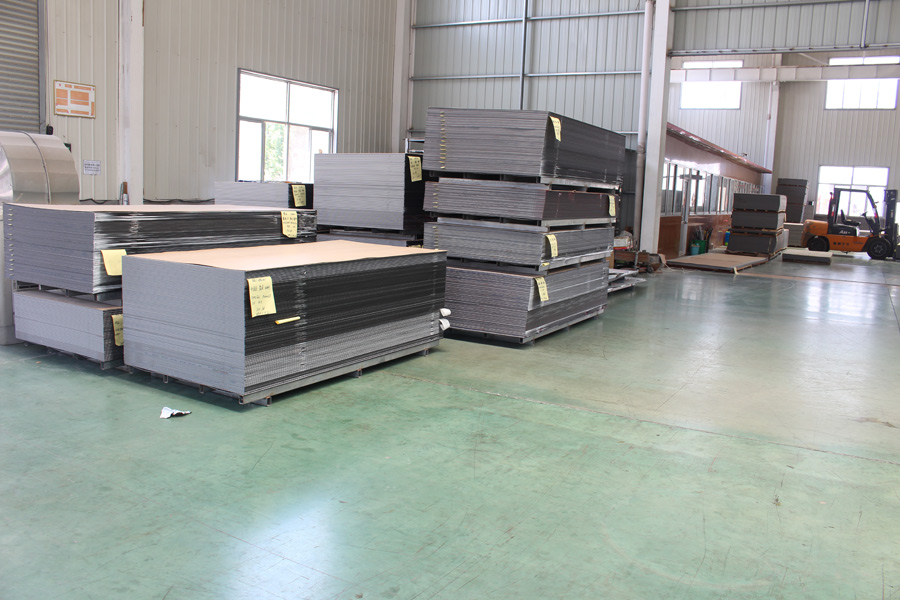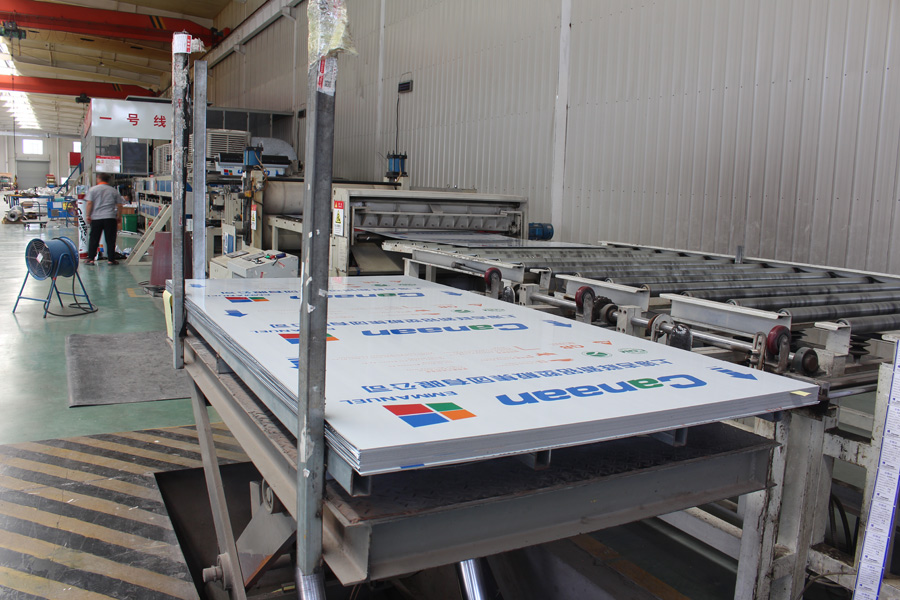The aluminum composite plate consists of two layers of 0.5mm thick aluminum plate inside and outside the center of the 2-5mm thick aluminum plate, and the surface is coated with a very thin fluorocarbon spray finish. This composite board is characterized by uniform color, flat appearance and convenient manufacturing, but the defect of this composite board is that the central sandwich of the composite board contains toxic ingredients, and the gas is discharged when burning or reaching high temperature, and the environment is polluted when using the internal and external walls, and the aluminum plate and PVC sandwich are glued together, and the composite strength is not high, and the force between the two layers can separate the aluminum plate and the sandwich.
In addition, because the aluminum plate is very thin, the central sandwich of the local heating is easy to expand and make the aluminum plate bulge outward. From the lightning protection point of view of the curtain wall, because the aluminum composite board is two layers of 0.5mm thick aluminum sheet and polyethylene pressure bonding. Polyethylene is a poor conductor, the two layers of aluminum sheet in the state of insulation, although in the composite aluminum plate manufacturing, the inner layer of aluminum alloy auxiliary frame, rivets and aluminum composite plate on the bending four sides fixed connected; Because the riveted surface is too small, and more importantly, the 0.5mm aluminum sheet is too thin, in the event of lightning, the large lightning current will break down the 0.5mm aluminum sheet when the building develops sideways around the curtain wall panel, and the strong current is difficult to pass through the composite plate grounding so that the building is struck by lightning.
From the manufacturing device of aluminum composite plate: The manufacturing of aluminum composite board is first slotted on the four sides of the composite board, cut off a certain width and a side of aluminum plate and plastic layer leaving only 0.5mm thick outer aluminum plate, the four sides are bent into a rectangle Angle of 90°, and then the rectangular subframe of the same size is made of aluminum material and placed in the rectangular slot of the aluminum-plastic plate. The bottom surface of the subframe is glued to the back side of the aluminum-plastic plate, and the bent four sides of the composite plate are fixed on the four sides of the subframe with a pull riveting. The center of the rectangle is then glued with structural adhesive on one to several aluminum profile reinforcement bars. At present, most device manufacturing units are not manufactured according to the above approach, and the upper side of the aluminum composite plate is bent into a 90° Angle after the slot, and only the four folding edges of the composite plate are fixed with Angle aluminum. In this way, the surface weight and any external force any load are borne by the four sides of 0.5mm aluminum plate, and the safety is small. Any curtain wall is subject to different positive and negative wind load pressure at any time, the four sides of the panel 0.5mm is easy to break, the phenomenon has appeared in most projects, so the aluminum composite panel curtain wall manufacturing must add aluminum alloy sub-frame and reinforcement.
Post time: Jun-05-2024





